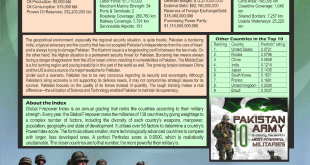Political reforms introduced by the British in India had instilled in Muslims a feeling that they would never get power to govern their lives and that they will become a permanent minority in a democratic system. This feeling was not unjustified or irrational at all because Muslims constituted only one-fourth of the total Indian population a big chunk of which consisted of Hindus. Quaid-i-Azam Mohammad Ali Jinnah, being the leader of the Muslims, not only identified the problems, but also worked hard, both physically and mentally, to find a viable answer to their dilemma.
Background
At the historic Allahabad session of All India Muslims League in 1930, the poet-philosopher Allama Muhammad Iqbal presented an idea that Islam has its own social and economic system and in order to implement it, a political entity was required. Iqbal also tried to convince Jinnah that “the enforcement and development of the Shariat is impossible in this country without a free Muslim State or States” and that it was “… the only way to solve the problem of bread for Muslims as well as to secure a peaceful India.” He also suggested, “In these circumstances, it is obvious that the only way to a peaceful India is a redistribution of the country on the lines of racial, religious and linguistic affinities.” It seems as if Jinnah was convinced by Iqbal’s idea but being a realist himself and also as advised by Iqbal, he was not ready to announce the new plan until he was confident that the vast majority of the Muslims were behind the Muslim League.
Rationale
The first practical step that evinced the change of attitude in the Muslim League leadership was a four-day conference of the Sind Provincial Muslim League, held at Karachi from October 8 to October 11, 1938. In his presidential address, Quaid-i-Azam gave reference of the breaking of Czechoslovakia and hinted that the fate of India might not be different as the Muslims of the land would never forgo ‘their national entity.’ A resolution was passed at the end of the conference wherein the leaders demanded the division of India into two dominions as only doing so was “in the interests of an abiding peace of the vast Indian continent and … of unhampered cultural development, the economic and social betterment and political self-determination of the two nations”. Thenceforth the idea of the partitioning India was discussed by Muslim League members on different official and unofficial forums.
Public Support for Jinnah
An overwhelming response to the call for celebrating the Day of Deliverance on December 22, 1939 was actually a vote of confidence in the leadership of Jinnah. From then onwards, Jinnah always negated the idea of a United India. For instance, in an interview with Sir Percival Griffith, Jinnah said, “You talk of the unity of India, but you ought to know that it is a chimera, existing nowhere except in your minds and in the external unity which you wisely forced on the country. You go on to talk of parliamentary democracy and you fail to realize that the assumptions on which it depends have no application at all to Indian conditions.”
In addition, in his article in Time and Tide, Jinnah wrote: [T]he members of the British Parliament, in spite of the experience of the past had not learnt that their form of Government is totally unsuited to India.” He concluded that “… a constitution must be evolved that recognizes that there are in India two nations, who must both share the governance of their common motherland.”
The Lahore Session of AIML
The 27th annual session of the Muslim League, in which the party was all set to change its goal, was originally scheduled for December 28-30, 1939. But later, Lahore was chosen as the venue and Sikandar Hayat as well as the Punjab chapter of the party was assigned the task to organize the meeting as early as possible. Hence it was decided that the meeting should be held from March 22 to March 24, 1940. After a gap of fifteen months from the 26th annual session of the party, that was held at Patna, a huge stage was set up at Minto Park Lahore on March 22, 1940. Muslim League workers and general masses had started coming to the venue ever since morning. The most significant feature of the session was the appearance of a huge number of Muslim women in a public meeting, something which was unheard off till that time. It was reported that it was the largest-ever gathering of Muslim League workers as more than one hundred thousand Muslims participated in this future-changing meeting.
The session started with the recitation from the Holy Quran. Then a couple of selected poems including one by Mian Bashir Ahmad, ‘Millat ka pasban hai Mohammad Ali Jinnah’ were recited. This was followed by the welcome address in Urdu presented by the Nawab of Mamdot. Next was Jinnah’s turn. He was zealously welcomed by the spectators, when he reached the dais. He started his speech in Urdu but soon he switched to English by saying that the ‘world is watching us, so let me have your permission to have my say in English’. Quite interestingly, the audience could not understand English, yet they not only listened to his long speech but that too with enthusiasm. According to The Times of India, “Such was the dominance of the personality that, despite the improbability of more than a fraction of his audience understanding English, he held his hearers and played with palpable effect on their emotions.”
What the Quaid said?
During his speech, Quaid-i-Azam demanded:
“[A]s soon as circumstances permit, or immediately after the war at the latest, the whole problem of India’s constitution must be examined de novo, and the Act of 1935 must go one for all.”
He opposed Gandhi’s demand that Indian would made their own constitution after the elections held on the basis of adult franchise and if minorities would have some issues, an impartial tribunal of the highest character should decide the dispute. Quaid-i-Azam wrapped up by declaring:
“If the British Government are really in earnest and sincere to secure the peace and happiness of the people of this Sub-continent, the only course open to us all is to allow the major nations separate homelands, by dividing India into autonomous national States.”
Resolution
The second session of the meeting commenced on Saturday, March 23, 1940. And, the most prominent feature of this session was the presentation of the Lahore Resolution which was presented by ‘Sher-i-Bengal’ Maulvi A.K. Fazlul Haq.
While presenting the resolution, he said that what Muslims wanted was ‘not merely a tinkering with the idea of federation but its thorough overhauling so that the federation may ultimately go’. He added that the ‘idea of federation must not only be postponed, but abandoned altogether’. This was followed by the speeches delivered by leaders representing different provinces, all of them echoing what their leader, Jinnah, said a day earlier. Choudhry Khaliq-uz-Zaman supported the resolution from UP, Maulana Zafar Ali Khan from Punjab, Sardar Aurangzeb Khan on behalf of NWFP Muslim League and Sir Abdullah Haroon supported it from Sindh.
Analysis
The Lahore Resolution consisted of five paragraphs and interestingly each paragraph consisted of only one sentence. It embodied five main points which are elaborated as under:
(i) The All India Muslim League emphatically reiterated that the scheme of Federation embodied in the Government of India Act 1935, was totally unsuited to, and unworkable in, the peculiar conditions of India. To be more precise, the scheme was altogether unacceptable to the Muslims of India.
(ii) As the then Viceroy declared on 18th October 1939 that the British Government intended to reconsider the policy and plan on which the Government of India Act 1935 was based, in consultation with Indian parties, therefore the Lahore Resolution touched upon this issue as well. It was reiterated that Muslims of India will not be satisfied unless the whole constitutional plan is reconsidered. They further resolved that no revised plan would be acceptable to the Muslims unless that was framed with their approval and consent.
(iii) The Muslim League resolved that no constitutional plan would be workable in India or acceptable to the Muslims unless it was designated on the basic principle “That geographically contiguous units are demarcated into regions which should be so constituted with such territorial readjustments as may be necessary and that the areas in which the Muslims are numerically in a majority as in the North-Western and Eastern zones of India, should be grouped to constitute ‘Independent States’ in which the constituent units were to be autonomous and sovereign.”
(iv) The Lahore Resolution asked for adequate, effective and mandatory safeguards in the future constitution for minorities. The safeguards were aimed at protection of religious, cultural, economic, political, administrative and other rights of minorities. The Muslim League wished that these safeguards should be available to the non-Muslim minorities living in the North-Western and Eastern Muslim zones and other parts of India where Muslims were in a minority.
(v) The Lahore session of the All India Muslim League authorized its Working Committee to frame a scheme of constitution in accordance with the basic principles given in the resolution. The scheme of constitution was expected to provide for the assumption of all powers such as defense, external affairs, communications and customs by the respective regions.
Importance
The passing of the resolution marked the transformation of the Muslim minority in British India into a nation with its distinguishing socio-cultural and political features, a sense of history and shared aspirations for the future within a territory. The Resolution employs modern political discourse for putting forward its demand rather than using a religious idiom for creating a religious-Islamic state for protection of Islam from the onslaught of other religions of India.
It made worldly demand keeping in view the peculiar problems of the Muslims of British India, the political experience of the Muslim community and the prevailing debate about the ways to protect Muslim identity, rights and interests against the backdrop of the modern state system established by the British in India.
Conclusion
The Resolution addressed the Muslim question in the political and constitutional context of British India and pointed out to the course of action the Muslim League intended to adopt to secure the Muslim identity, rights and interests.
The Resolution thus offered a new course of action for the Muslims of British India as compared to the Muslim League position adopted on constitutional and political issues in the past.
 Jahangir's World Times First Comprehensive Magazine for students/teachers of competitive exams and general readers as well.
Jahangir's World Times First Comprehensive Magazine for students/teachers of competitive exams and general readers as well.



